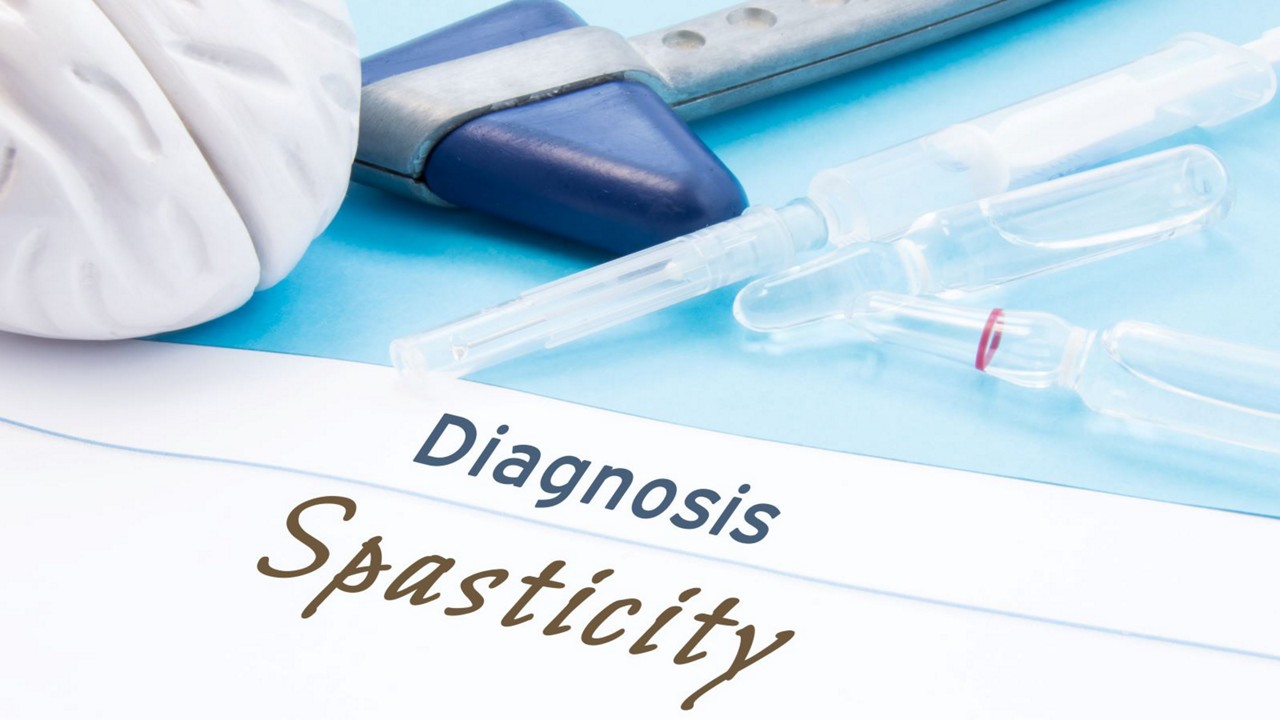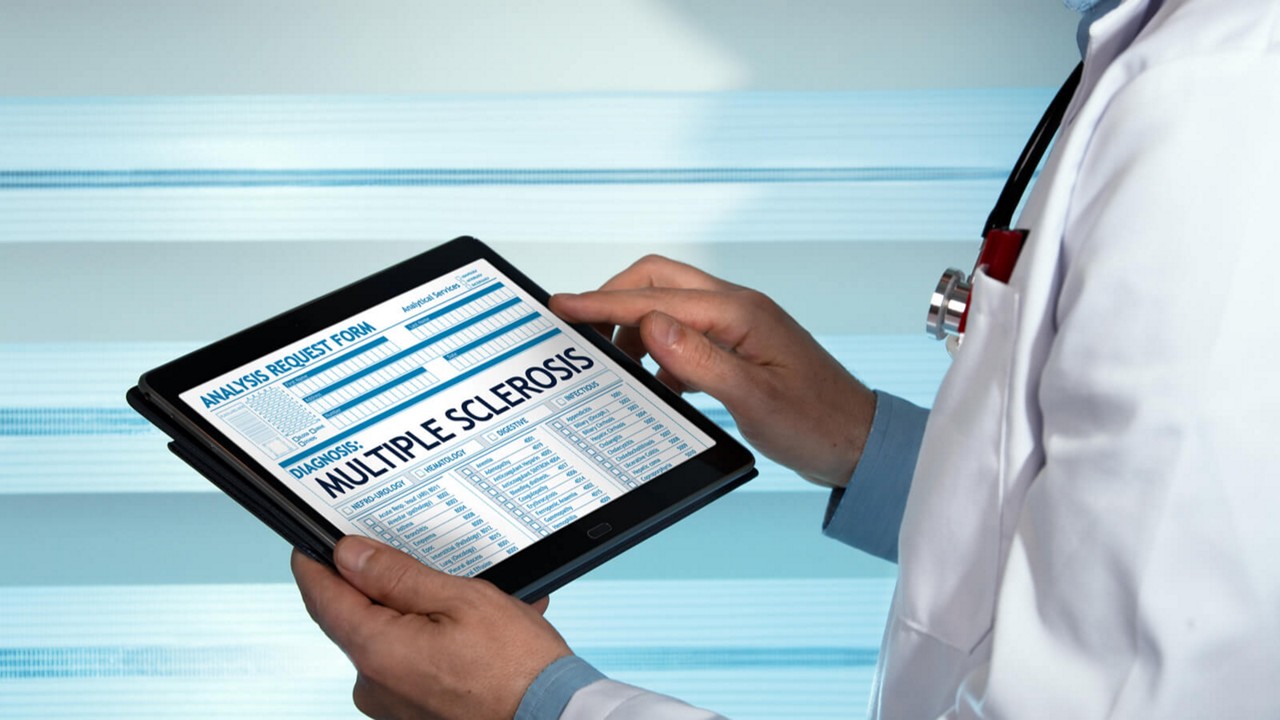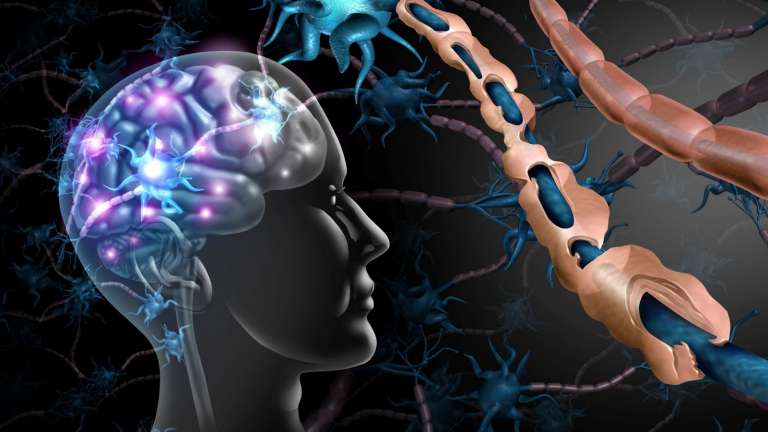Understanding MS
These nerve cells are linked by fibres called axons. Electrical signals send information between the nerve cells along the axons. Axons are protected by myelin, a substance that is wrapped around the nerve fibres that helps signals pass at high speeds. In MS, immune cells begin a process that leads to the attack of and damage to the myelin. Damage to the axons may also occur, and can cause a disruption in the nerve signal. The damage caused by MS creates lesions, or scars, on your brain and/or spinal cord that may be seen with magnetic resonance imaging (MRI). These areas of scarring, or “sclerosis,” are where myelin has been lost. So, MS actually means “many scars.” Talk to your doctor about the results of your MRI and when you should have your next MRI.
Types of MS:
There are several different disease classifications in multiple sclerosis (MS). A course means the way the disease affects the body over time. It can be helpful to understand the differences between them, especially for conversations with your healthcare provider.
Relapsing-remitting MS (RRMS): This the most common form of MS. About 85% of patients with MS initially present with this type.
People with relapsing-remitting MS have unpredictable relapses (attacks) of symptoms, but generally return to normal between relapses. However, some people with relapsing-remitting MS can get worse after each relapse. While their condition is stable between relapses, they do not return to their previous state of health and do not recover fully after each attack. Treatments for RRMS can help reduce the severity and number of relapses.
Relapses:
- Last more than 24 hours
- Sudden onset
- Can be mild or severe
- Usually go away
- Are temporary but may interfere with your daily activity
Secondary-Progressive MS (SPMS): Without treatment, secondary-progressive MS, formally called chronic progressive MS, develops within 10 years in about 50% of people who have had relapsing-remitting MS. However, these odds can be significantly reduced if treatment with Disease Modifying Drugs (DMDs) is initiated shortly after diagnosis.
Primary-Progressive MS (PPMS): People with primary-progressive MS have steadily worsening symptoms from the onset of their disease and do not have distinct relapses. Their disability gradually worsens, and it may level off at some point or continue over months or years.
Who gets MS
- 2.8 million people around the world have MS
- Over 6000 people in South Africa are thought to have MS
- Twice as many women develop MS than men
- Most people are diagnosed with MS between 20 and 50 years of age
- MS is more common in Caucasians and in those of Northern European descent. However, people of any background can get MS. Starting therapy is an important step in doing something about your MS. Your doctor will work with you to achieve these treatment goals, while minimising the risk of unwanted side effects.
Genetics:
The precise cause of MS is unknown; however, evidence suggests that MS has at least a partial hereditary basis. Approximately 20% of patients with MS have ≥1 affected relative. The lifetime risk of developing MS increases with the degree of genetic sharing.
For first degree relatives of a person with MS, such as children, siblings or nonidentical twins, the risk rises to approximately 2.55% - with the risk being potentially higher in families that have several family members with the disease. The identical twin of someone with MS (who shares all the same genes) has a 25% chance of developing the disease. If genes were solely responsible for determining who gets MS, an identical twin of someone with MS would have a 100% chance of developing the disease. The fact that the risk is only one in four demonstrates that other factors, including geography, ethnicity and the elusive infectious trigger, are likely involved as well.
Common MS Symptoms
Do any of these symptoms sound familiar

You may not know what MS (Multiple Sclerosis) is and that’s ok. Learn more about MS and start getting the answers for you and your loved ones.
- Issues with memory, attention or problem solving
- Depression or mood swings
- Vision problems
- Pain, weakness, fatigue
- Heat sensitivity
- Bladder problems
- Walking and balance problems
Getting to know common MS symptoms

Please ask yourself the following questions, for you to have a better understanding of the symptoms that you are experiencing.
- When did the symptom(s) start?
- How long did they last?
- Did something happen to develop the new symptom? (eg, a new activity or an infection, fever)
- What have you done to manage the symptom(s)? Was it helpful?
- Are your activities of daily living such as being able to dress, feed yourself, go to work, take care of your family or socialise impacted?



